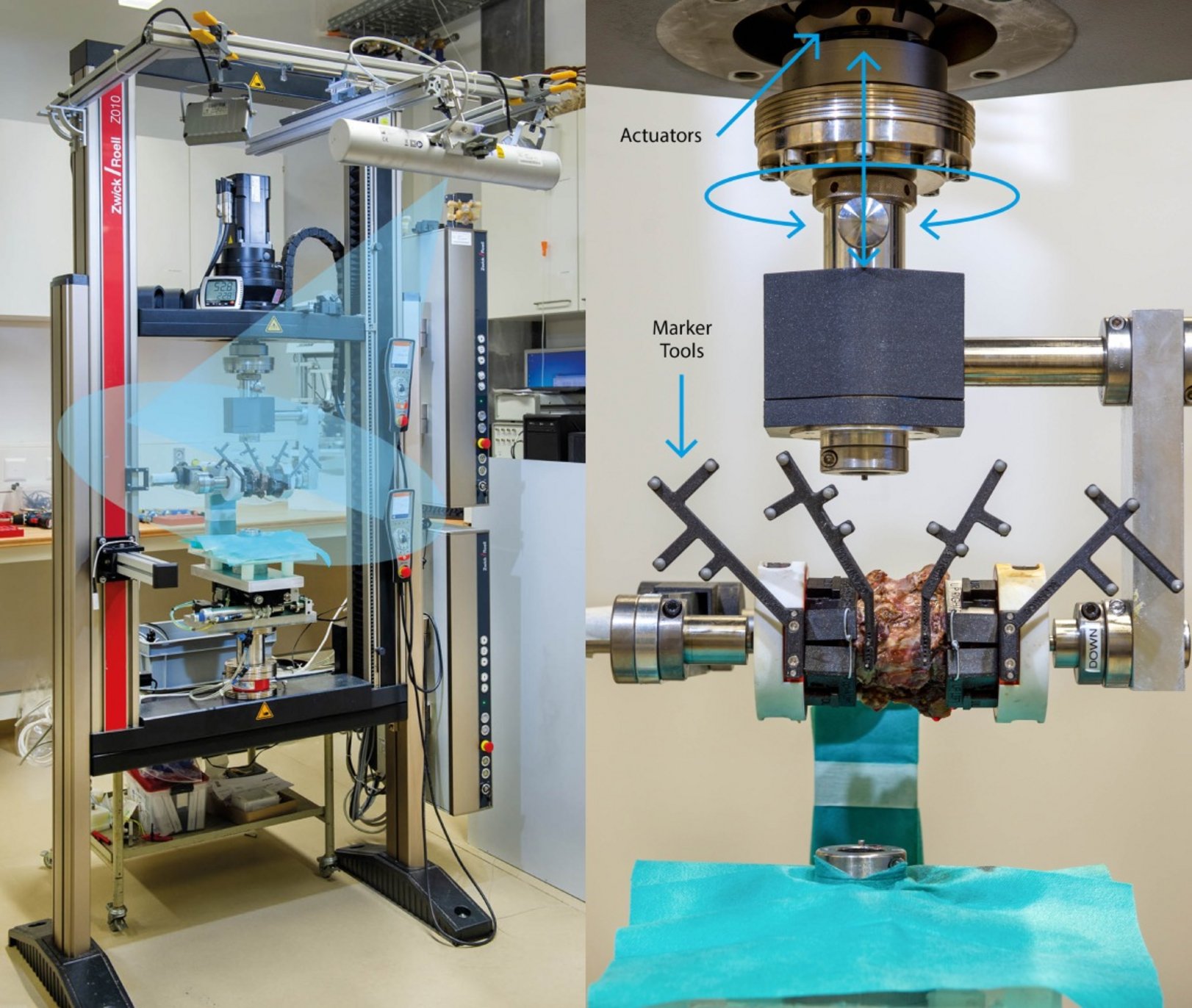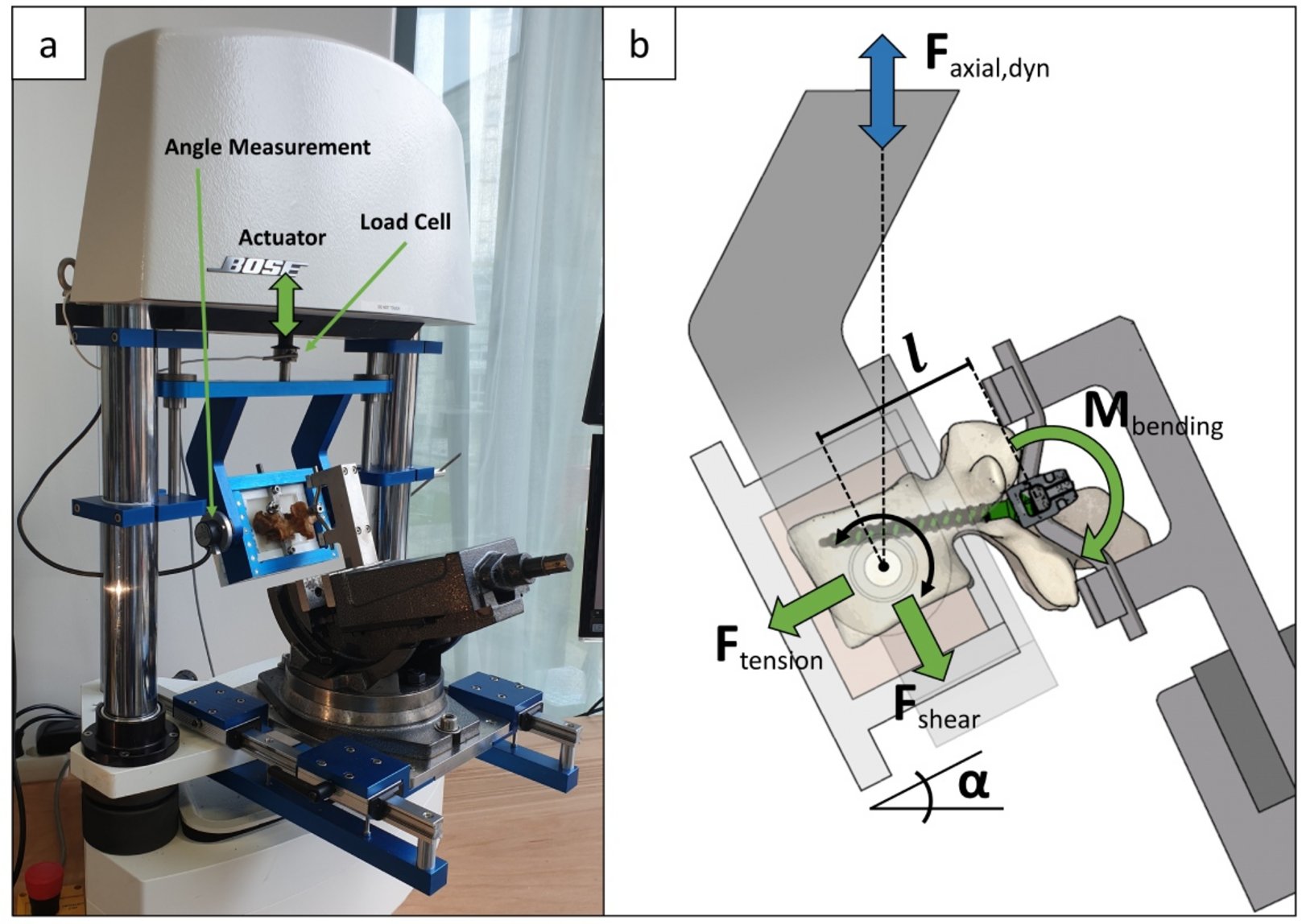Spine Lab
Biomechanical research with cutting-edge technologies

The Spine Lab at Balgrist Campus is a testing lab for spinal research and uses cutting-edge technologies to perform experimental studies. At the Spine Lab, insights on the fundamentals of the spine are gained and complex biomechanical questions are answered.
The Spine Lab is located at Balgrist Campus. It is well equipped with a variety of test machines to perform experimental and biomechanical research. The test machines are furnished with experiment-tailored test rigs that allow for mechanical testing of spinal cadavers. In cooperation with surgeons from the Balgrist hospital and engineers from ETH Zurich, a plethora of studies has been performed to investigate current clinical questions.

Mechanical characterization of the spine
In a very comprehensive study, the soft tissue of the spine of 30 human cadavers was mechanically characterized. It is one of the most extensive cadaveric studies ever performed on the spine and the derived data massively improves the understanding of the spine. The goals of this study are manifold. For instance, the mechanical characterization of soft tissue is required for the development and validation of patient-specific biomechanical models. At Balgrist Campus, a multitude of computational studies are ongoing and the experimental data is a necessary contribution to define parameters in these models. The study aims to improve the understanding of the functionality of various paraspinal structures and the effect of degeneration on these structures. These fundamental insights are made available to the global research community.
Cyclic fatigue tests of pedicle Screws
A frequent postoperative complication in spine orthopedics is screw loosening after spinal fusion. It is a particularly big issue in osteoporotic patients. The bone around the pedicle screws fatigues during the post-operative daily activities and the implant becomes loose. At the Spine Lab, a test setup was developed that allows endurance testing of pedicle screws in the vertebral body. This allows to experimentally investigate new and more optimal screw trajectories. In these experiments, pedicle screws are put under cyclic load to up to 1.8 Mio cycles. The loosening of the screws is quantified for different types of trajectories and their performance.

Analysis of spinal implants and surgical interventions
A further research field of the Spine Lab is the analysis of spinal implants and spinal interventions. As an example, the effect of “cross-connectors” was investigated. Cross-connectors are horizontal rods that are mounted between the vertical rods of the dorsal instrumentation. The goal is to increase the stiffness of the construct used for a spondylodesis. For this purpose, spinal and anatomy-specific 3D-printed clamps were used to mount vertebral segments and to measure the stiffness of the construct in all six major axes, with and without cross-connector. The range of motion of the construct was accurately measured with a 3D-motion capturing system. It was shown that cross-connectors improve the stiffness of a construct only by a small amount. Hence, cross-connectors were evaluated not to be of big clinical relevance. This example shows how research in the spine lab impacts the clinical routine.